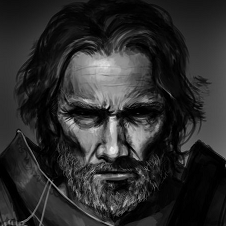-
Posts
38,423 -
Joined
-
Last visited
Content Type
Profiles
Forums
Events
Gallery
Everything posted by Ace-Garageguy
-

Lack of motivation to build
Ace-Garageguy replied to MPi-KM's topic in General Automotive Talk (Trucks and Cars)
For me lately it's been a lot of nagging real-life stuff getting in the way of me being able to sit down and enjoy building. Several minor health, personal and financial issues have combined to kinda kill my interest in doing much of what's not absolutely necessary. Funny thing is, when I force myself to make some bench time, all the BS disappears for a while, and I enjoy myself. It's just getting started each session that's tough right now. I'm also trying to break a long-standing habit of making fun and creative starts on projects, and then putting them aside to start something else when some technical difficulty arises. I have plenty of real work to do in my life...model building isn't that much fun when it gets to be work too...recently, anyway. -

Moebius `65 Plymouth Satellite
Ace-Garageguy replied to FASTBACK340's topic in Car Kit News & Reviews
If you look at a lot of photos of the real car, and carefully analyze the exact shape of the windshield, it looks to me to be a really tough one to get right. In some shots of the real car, the center of the top of the glass appears to be flatter than the model, while the corners appear to have more wrap. In other shots, the windshield as-modeled appears to be exactly as the real car is proportioned and curved. Based on what Bill Geary's had to say...a man who's posted numerous well-documented and photographed threads on correcting flaws in kits, who spots what's wrong easily, and who's seen the actual kit up close and personal... I'd be inclined to accept that this kit is pretty close to spot-on. -

What Do New Kits Have Inaccuracies
Ace-Garageguy replied to 69NovaYenko's topic in General Automotive Talk (Trucks and Cars)
Exactly. I wonder just why this seems to be so hard to grasp. -

What Do New Kits Have Inaccuracies
Ace-Garageguy replied to 69NovaYenko's topic in General Automotive Talk (Trucks and Cars)
Oh please. This has been hashed to death over and over and over and over. To scale something down, you measure it accurately once. You divide the measurements by the scale. Once. You then have an accurate model. How frigging hard is it to measure and divide? -

What Do New Kits Have Inaccuracies
Ace-Garageguy replied to 69NovaYenko's topic in General Automotive Talk (Trucks and Cars)
Budget constraints and short time-to-posting don't allow, unfortunately, for posters to always do that. Editing a post for grammatical correctness and using spell-check take time, and everybody knows time is money. Spellig, gramor, sintax and other facets of Engligh should all be considered "close enough" if you can kinda get the point across. -
Nice work. That body has some serious mold-registration issues, and it looks like you've done a fine job correcting them...far better than some folks who've been doing this a long time. Way to go.
-
Sometimes it'll work differently depending on the phase of the moon, your browser and browser settings, etc. I use the "img" option at the bottom of the "Photolinks" choices. Left click it and it turns yellow momentarily. That's the "copy" function. Or if it doesn't turn yellow, highlight it and do a manual "copy". Then go back to the page and post you're trying to put the picture on. Do "Ctrl v" which is also "paste". The "img" code will appear in the body of the post. When you enter "POST", the picture will be displayed.
-
Back in '13 I started doing a chopped, sectioned Caddy Kustom based on the Monogram '53 Chebby.
-
Man...I LIKE that old Eldo !
-
After doing much the same thing twice in about as many years, i started putting my bottle of liquid cement in a heavy old ceramic coffee mug that had the handle broken off. Took a while to train myself to always put the bottle back in the cup, but I haven't inadvertently knocked it over now for several years.
-
Another great looking model. On my gotta-have-several list too.
-

Moebius `65 Plymouth Satellite
Ace-Garageguy replied to FASTBACK340's topic in Car Kit News & Reviews
Another beautiful model from an era I never expected to see newly-tooled kits from again. Kudos to Moebius for making this happen, and for what looks to be a fine piece of work. Another one on my must-have-multiples list. -
Absolutely stunning model. I'll be in line for several of every flavor, whether I ever build them or not. So great to see a model company doing such fine work bringing otherwise unobtainable subjects to market.
-

Very Sad News from ModelHaus Today
Ace-Garageguy replied to 59-Desoto's topic in Car Aftermarket / Resin / 3D Printed
My deepest sympathy. No words are adequate. -

What Do New Kits Have Inaccuracies
Ace-Garageguy replied to 69NovaYenko's topic in General Automotive Talk (Trucks and Cars)
You've answered your own question. I've been involved with various aspects of manufacturing, at various levels, throughout my 40+ year professional life. I've seen what happens to even the best intentions. ANY less-than-optimum product brought to market is so because of a combination of all the above, in varying degrees. And ONE large problem in today's business world is the mistaken belief that it's too "hard" for an individual or really REALLY small team to get a job done. The more fingers you have in a pie, the more "specialization" you have to rely on, the more "outsourcing" you choose to use...the more opportunities there are for problems to creep in and to fall through the cracks. There simply IS NO OTHER REASON than the ones you've listed above, and anyone who says otherwise is making excuses. -
http://www.hemmings.com/classifieds/carsforsale/sprint/unspecified/1696771.html?refer=blog
-

Real or Model #232 FINISHED!
Ace-Garageguy replied to Harry P.'s topic in Real or Model? / Auto ID Quiz
I'll answer for him. '35 Duesenberg SJ Town Car by Bohman & Schwartz http://blog.hemmings.com/index.php/2014/12/04/1935-duesenberg-sj-town-cabriolet-reportedly-designed-for-mae-west-heads-to-auction/ -

the best 32 3-Window kit?
Ace-Garageguy replied to Jon Haigwood's topic in Model Building Questions and Answers
After the 5-window, the 3-window may be a little disappointing. It's a fine kit, but has nowhere near the number of optional bits as the later kit. -
And insanely overcomplicated for no particular reason. Seems like the Germans jumped off the unnecessary-complication cliff decades ago, and the rest of the car world has made the Lemming-like plunge right along after them. KISS is dead, along with any concept of functional design elegance.
-

Real or Model #232 FINISHED!
Ace-Garageguy replied to Harry P.'s topic in Real or Model? / Auto ID Quiz
Ummm...Photoshop? -

Real or Model #232 FINISHED!
Ace-Garageguy replied to Harry P.'s topic in Real or Model? / Auto ID Quiz
This is another one-of-a-kind car that's instantly recognizable in some circles, and I've seen it before. Rolled the dice it hadn't been modeled (plus the panel fit and gloss on the paint just look too too good...) Only things I really don't like on this car are the landau irons, which have absolutely no place on a non-convertible (or at least a fake convertible), and the hiccup in the body line at the cockpit. Pretty stunning piece anyway though. Auburn-like nose... -
Hmmm. I have a '92 Chevy truck with power windows, 280,000 miles, and they both work like new. So do the ones in the '89 Celica convertible with 180,000 miles. Geez...I DO wish I had a newer vehicle so I had to routinely replace all that "better designed" stuff. I feel SO left out.
-
Excellent.
